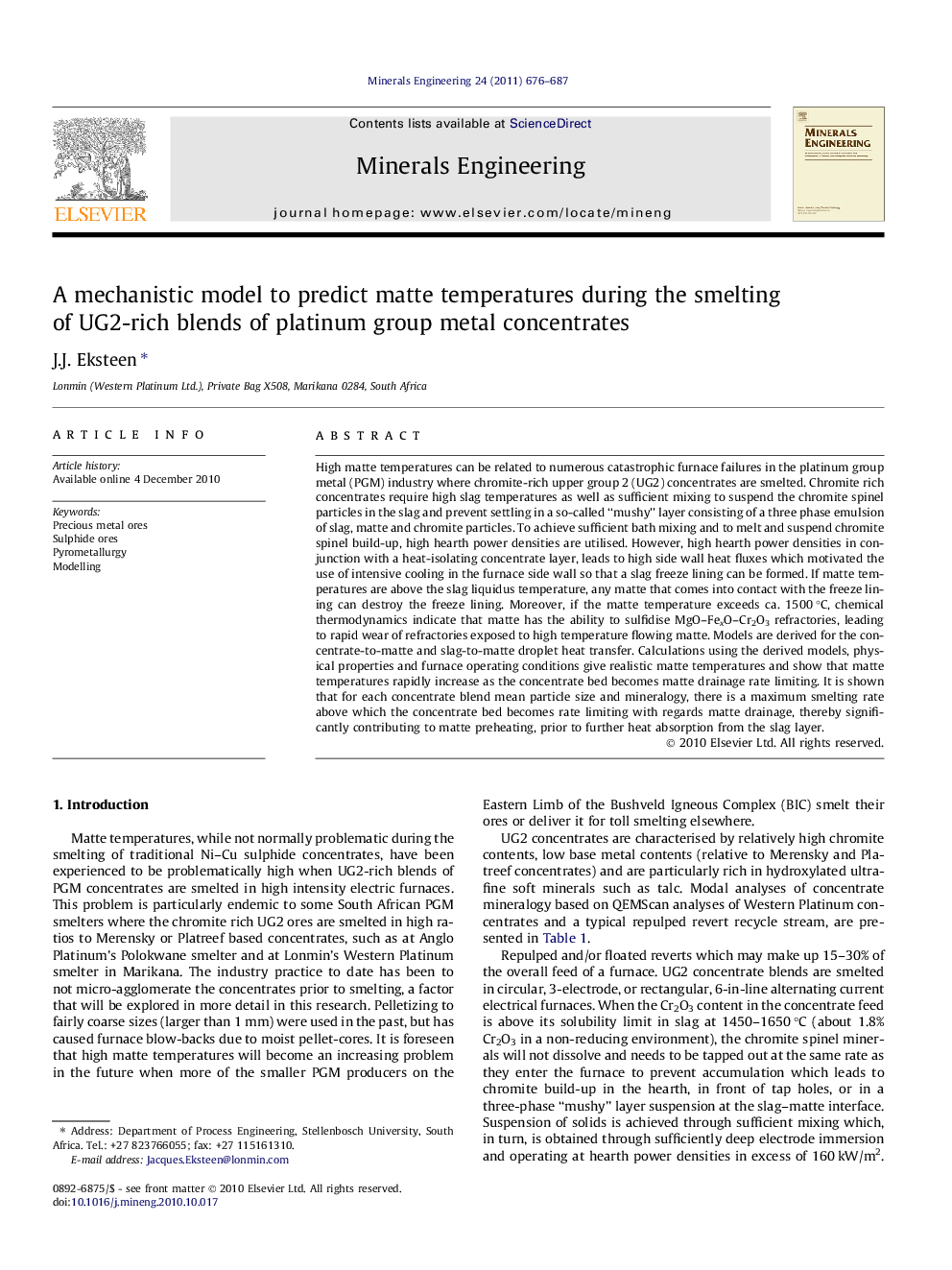| کد مقاله | کد نشریه | سال انتشار | مقاله انگلیسی | نسخه تمام متن |
|---|---|---|---|---|
| 233817 | 465365 | 2011 | 12 صفحه PDF | دانلود رایگان |

High matte temperatures can be related to numerous catastrophic furnace failures in the platinum group metal (PGM) industry where chromite-rich upper group 2 (UG2) concentrates are smelted. Chromite rich concentrates require high slag temperatures as well as sufficient mixing to suspend the chromite spinel particles in the slag and prevent settling in a so-called “mushy” layer consisting of a three phase emulsion of slag, matte and chromite particles. To achieve sufficient bath mixing and to melt and suspend chromite spinel build-up, high hearth power densities are utilised. However, high hearth power densities in conjunction with a heat-isolating concentrate layer, leads to high side wall heat fluxes which motivated the use of intensive cooling in the furnace side wall so that a slag freeze lining can be formed. If matte temperatures are above the slag liquidus temperature, any matte that comes into contact with the freeze lining can destroy the freeze lining. Moreover, if the matte temperature exceeds ca. 1500 °C, chemical thermodynamics indicate that matte has the ability to sulfidise MgO–FexO–Cr2O3 refractories, leading to rapid wear of refractories exposed to high temperature flowing matte. Models are derived for the concentrate-to-matte and slag-to-matte droplet heat transfer. Calculations using the derived models, physical properties and furnace operating conditions give realistic matte temperatures and show that matte temperatures rapidly increase as the concentrate bed becomes matte drainage rate limiting. It is shown that for each concentrate blend mean particle size and mineralogy, there is a maximum smelting rate above which the concentrate bed becomes rate limiting with regards matte drainage, thereby significantly contributing to matte preheating, prior to further heat absorption from the slag layer.
Research highlights
► A model has been developed that predicts when the concentrate bed in PGM smelting furnace becomes rate limiting.
► The role of concentrate bed sintering is explored in its effect on matte preheating.
► The effects of high matte temperatures are explained.
► A model has been developed for heat transfer from concentrate beds to matte.
► A model has been developed for matte droplet formation and slag-to-matte droplet heat transfer.
Journal: Minerals Engineering - Volume 24, Issue 7, June 2011, Pages 676–687